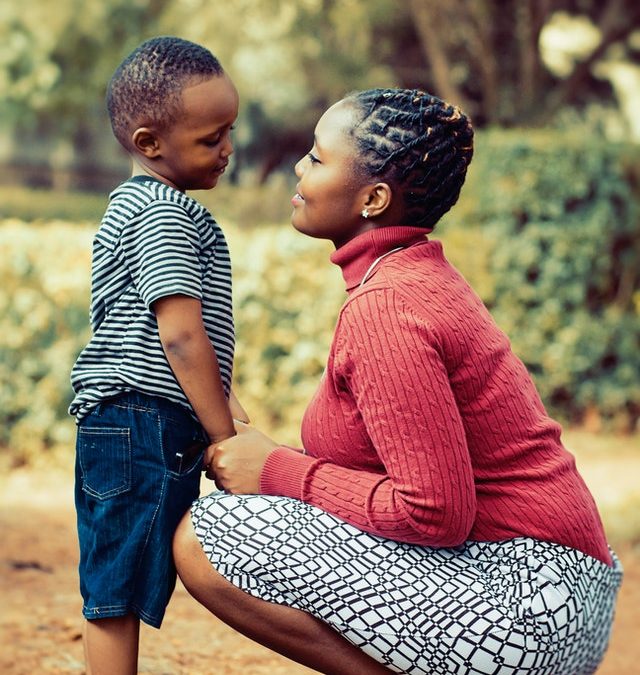
Technology Addiction
By Maude Le Roux, OTR/L, SIPT, RCTC, DIR® Expert Trainer at A Total Approach
Ever since our response to the COVID-19 pandemic began, we’ve been spending much more time using our smartphones, tablets and computers. We rely on our devices as well as social media and digital content as primary ways to stay informed, entertained and connected.
While the use of tech devices immediately replaced in-person meetings and classroom learning, it is likely to continue this way for some time. That’s why we are all at increased risk for technology addiction during the COVID-19 pandemic—especially adolescents, who have already accounted for one-third of internet users before the coronavirus outbreak.
John K. Kriger, MSM, LCADC, CPS, sees a correlation between dependent device use and substance use disorder as defined by the American Psychiatric Association’s fifth edition of The Diagnostic and Statistical Manual of Mental Disorders (DSM-5), especially with regard to the cycle of obtaining, using and recovering from device use.
John educates therapists and parents about tech dependence and the ways to manage it. He’s been studying tech dependence for 12 years, and he has found evidence that both children and parents may develop a tech addiction due to their dependence on devices.
Especially in a physical-distancing household during the COVID-19 pandemic, children and adults could be developing a technology addiction if they:
- Are increasing their use of devices, which creates a desire for more use.
- Have a constant need to check email or text messages.
- Get anxious and irritable without their devices.
- Lose their sense of time and underestimate how long they’re on their devices.
- Spend excessive amounts of money on their devices.
- Are limiting their social and personal interactions because of their devices.
- Stop taking care of themselves because of their devices.
- Fail to fulfill major obligations like work and homework because of device use.
- Are critically distracted by their devices in physically hazardous situations like driving, walking.
Technology Addiction: A Mental Illness?
Considered a mental illness by scientists, addiction is defined as a chronic and complex brain disorder characterized by compulsive substance seeking, continued use despite harmful consequences and long-lasting changes in the brain. The National Institute on Drug Abuse (NIDA) “Preventing Drug Use Among Children and Adolescents: A Research-Based Guide” identifies indicators of future substance abuse, including:
- Social isolation.
- Poor social skills.
- Early antisocial behavior.
- Inability to bond with positive peer groups.
- Low commitment to school and community.
- Positive attitude toward substance abuse.
- Lacking a positive peer group.
- Having an older sibling who is involved.
All these signs are evident in a person’s behavior when they’re dependent on devices.
Impact of Tech Addiction on Child Development
The negative impact of technology dependence, abuse or addiction and digital media on child development can be far-reaching. A 2011 study from the American Academy of Pediatrics finds that, after watching just nine minutes of the popular Nickelodeon cartoon “SpongeBob SquarePants,” 4-year-old children tested poorly on executive function activities that challenged abstract thinking, short-term memory, impulse control and the ability to delay gratification.
Researchers believe the overstimulated experience of watching hyper-fast-paced, fantastical cartoons like “SpongeBob” can also distract younger children and decrease their attention spans, which can lead to autistic-like behavior, such as:
- Losing the ability to have healthy interpersonal relationships.
- Preoccupation with a narrow topic of interest.
- Repetitive body movements like rocking or flapping hands.
- Upset over changes in their routine or environment.
- Obsessive attachment to devices or unusual objects like light switches or rubber bands.
- Clumsiness, atypical posture or odd ways of moving.
- Hyper- or hypo-reactivity to sensory input.
Science Is Studying Screen Time
In 2018, the National Institutes of Health embarked on a 10-year study of children’s brains to see if and how time on phones, tablets and other screens impacts young brain development. It’s called the Adolescent Brain Cognitive Development Project at the National Institute on Drug Abuse and is directed by Dr. Gaya Dowling.
Two years into the study, the data from MRI brain scans of 9- and 10-year-old kids is showing “significant differences” in the brains of those who use smartphones, tablets and video games more than seven hours a day, such as premature thinning of the cortex, typically related to malnutrition.
The researchers are also finding that kids who spend more than two hours a day on screens of any kind are making lower scores on thinking and language tests.
The results of this groundbreaking study will be complete after 2028—and will likely incorporate the influence of tech dependency in the time of COVID-19.
To learn with depth, focused attention is required to increase the brain’s capacity to process information. A Better Communications Research Programme (BCRP) study suggests a recent increase of 70 percent in children’s speech delays in the U.K. is due to tech devices, indicating that too much time on devices is affecting children’s speech and language skills.
In 2019, Rutgers-New Brunswick conducted the first classroom study that finds cell phone distraction in the classroom can lead to lower grades. When students are allowed to use their devices for non-academic purposes during classroom lectures, they perform worse in end-of-term exams.
Other studies show students can’t resist multitasking when a device is near, and it’s impairing their memory. Continual distraction impairs the ability to focus and learn, which leads to “partial focused attention.”
The underdeveloped adolescent brain lacks restraint and self-control. Parents need to help their children learn moderation when it comes to the use of tech devices.
Screen Time Guidelines
In 2016, the American Academy of Pediatrics (AAP) announced the most recent recommendations for digital media immersion to help families maintain “a healthy media diet.” The guidelines include creating a personalized Family Media Use Plan and these key recommendations:
Children 18 to 24 months: No digital media use except video chatting. When their children are old enough, parents should introduce digital media with high-quality programming and watch it with their children.
Children ages 2 to 5 years: Limit screen time to one hour per day of high-quality programs, and watch it with the children.
Children ages 6 and older: Place consistent limits on screen time and types of media and “make sure media does not take the place of adequate sleep, physical activity and other behaviors essential to health.”
Designate media-free times together, such as during dinner or while driving, and media-free locations in the home, such as bedrooms.
Have ongoing communication about online citizenship and safety, including treating others with respect online and offline.
Strategies to Offset Tech Addiction
- Parents’ behavior should model what they want from their children’s behavior.
- Parents should retain total access to all mobile phones, tablets and computers in the home and monitor device use of anyone less than 18 years of age.
- For special-needs children, limit handheld games to “rewards” of no more than 15 to 20 minutes.
- Log scheduled time on apps, checking and responding to email and texting.
- When reducing tech use, offer opportunities for increased interpersonal interaction and engage in reading, board games and other non-electronic activities.
- Consider introducing your children to meditation, prayer or other periods of introspection.
Three Ideas for Practical Application
When your kids are likely going to be in front of the computer multiple hours during the day for school—and they’ll still want to use screen time for fun—here are a few ideas for parents to incorporate during COVID-19:
- Have your child take sensory breaks.
- Keep ice water next to your child.
- Rather than always being seated directly in front of the computer, have your child view the screen from different positions such as standing or on laying on the floor.
It is a well known observation that children struggling with a developmental delay and / or corresponding diagnosis, tend to find technology to be a strong outlet for their superior cognitive skills, making them more prone to tech addiction, leading to a decrease in much needed social and problem-solving exposure.
Call us now at 484-840-1529 for a free initial phone consultation.







Recent Comments